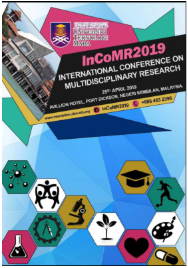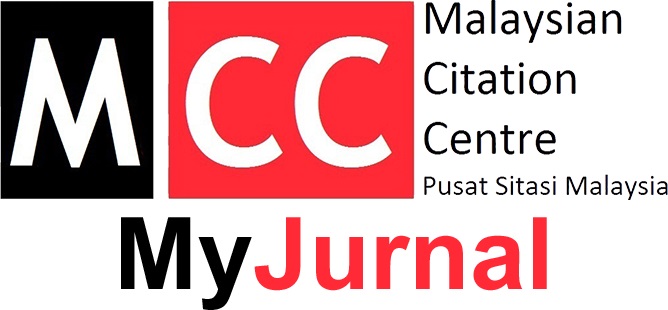The Readiness of Takaful Operators to Adopt Waqf (Endowment) As Additional Feature in Takaful Policy
Keywords:
takaful, waqf, insurance, new product, non-parametricAbstract
This paper aims to explore the readiness of takaful operators to integrate waqf as part of their product feature by assessing on the components of as proposed in the New Product Development Model: marketing supports; formalized development process and top management supports. Questionnaire was employed in this survey and takaful operators’ employees who involved in product development were selected such as actuaries, business development managers and their executives. Unexpectedly, several takaful operators withdrew from participating in the survey (it was last minute) – which is limitation in this study. Accordingly, it caused the use of non-parametric tests in this study since the data is not normally distributed. Spearman rank correlation shows that formalized development process is the significant factor that influenced the readiness of the takaful operators to integrate waqf in their products. However, the other two independent variables which are marketing supports and top management supports depicted insignificant result. Nevertheless, the findings were still able to provide insights on the integration of waqf by takaful operators as their latest products’ feature.
References
Ab Rahman, A., & Ahmad, W. M. W. (2011). The concept of waqf and its application in an Islamic insurance product: The Malaysian experience. Arab Law Quarterly, 25(2), 203-219.
Azhar, A., & Badarulzaman, M. H. (2015). The Practice of Hibah In Takaful Institutions: A Case Study In Takaful Ikhlas Sdn Bhd.
Ettlie, J. E., & Elsenbach, J. M. (2007). Modified Stage‐Gate® regimes in new product development. Journal of Product Innovation Management, 24(1), 20-33.
Graner, M., & Mißler-Behr, M. (2013). Key determinants of the successful adoption of new product development methods. European Journal of Innovation Management, 16(3), 301-316.
Hinton, P.R, Brownlow, C., McMurray, I., & Cozens, B. (2004). SPSS Explained. London and New York: Routledge Taylor & Francis Group.
Ibrahim, D., & Ibrahim, H. (2013). Revival of Waqf properties in Malaysia. In The 5th Islamic Economics System Conference (iECONS 2013), Kuala Lumpur.
Kamaludin, R.S. (2017). Islamic Banking Institution Collaborate to Develop Waqf Fund.
Kuran, T. (2001). The provision of public goods under Islamic law: Origins, impact, and limitations of the waqf system. Law and Society Review, 841-898.
Lu, L. Y., & Yang, C. (2004). The R&D and marketing cooperation across new product development
stages: An empirical study of Taiwan's IT industry. Industrial marketing management, 33(7), 593-605.
Malaysian Takaful Association (2015). Annual Report. http://www.malaysiantakaful.com.my/mta.optima.my/files/e4/e4de2ea8-ece9-4d08-80dd-277c12a6c0fe.pdf.
Malaysian Takaful Association (2016). Annual Report. http://www.malaysiantakaful.com.my/mta.optima.my/files/a9/a9c4be34-740f-43dc-b909-bfd487b00b61.pdf.
Muhamad, N. H. N. (2010). Pemakaian prinsip hibah dalam sistem kewangan Islam di Malaysia: Tumpuan kepada industri perbankan Islam dan Takaful. Sains Humanika, 52(1).
Muhamat, A. A., Jaafar, M. N., & Alwi, S. F. S. (2017). Takaful Operators’ Corporate Social Performance (CSP): An Industry Perspective. In SHS Web of Conferences (Vol. 36, p. 00001). EDP
Sciences.
Muhamat, A. A., Jaafar, M. N., & Rosly, H. E. (2011). A study on the revitalization of Waqaf (endowment) lands for agribusiness activities. In Proceedings of 2nd international conference on
business and economic research (2nd ICBER) (pp. 14-16).
Muhamat, Ahmad & Jaafar (2017). Waqf (endowment) As Alternative Feature for Takaful Operator. Contemporary issues on zakat, waqf and Islamic philanthropy (chapter in book).
Nijssen, E. J., & Frambach, R. T. (2000). Determinants of the adoption of new product development tools by industrial firms. Industrial Marketing Management, 29(2), 121-131.
PEMANDU. (2014). Economic Transformation Plan (ETP) Performance Management Delivery Unit (PEMANDU) Retrieved from Kuala Lumpur.
Perbadanan Wakaf Selangor. (2017). Terimaan Sumbangan Saham Wakaf Selangor (2011-2017).
Rawi, A. M. (2014). Hibah dan Waqf: Perancangan Kewangan Akhirat.
Rodríguez, N.G., Pérez, M.J.S., & Gutiérrez, J. A.T. (2007). Interfunctional trust as a determining factor of a new product performance. European Journal of Marketing, 41(5/6), 678-702.
Sadiq, R., & Mushtaq, A. (2015). The Role of Islamic Finance in Sustainable Development. Journal of Islamic Thought and Civilization, 5(1), 47.
Sekaran, U. (2006). Research Methods of Business. Canada: John Wiley & Sons.
Stephanie. (2014). Non-Parametric Data and Tests (Distribution Free Test).
Storey, C. D., & Easingwood, C. J. (1996). Determinants of new product performance: a study in the financial services sector. International Journal of Service Industry Management, 7(1), 32-55.
Wiersma, W. (1995). Research methods in education: An introduction.
Zeni, N. A. M. & Sapuan, N.M. (2017). The Role of Waqf in Achieving Sustainable Development Goals. Contemporary Issues on Zakat, Waqf and Islamic Philantrophy, page 172-180.
Downloads
Published
Issue
Section
License
Copyright (c) 2019 Journal of Academia

This work is licensed under a Creative Commons Attribution-NonCommercial-NoDerivatives 4.0 International License.












